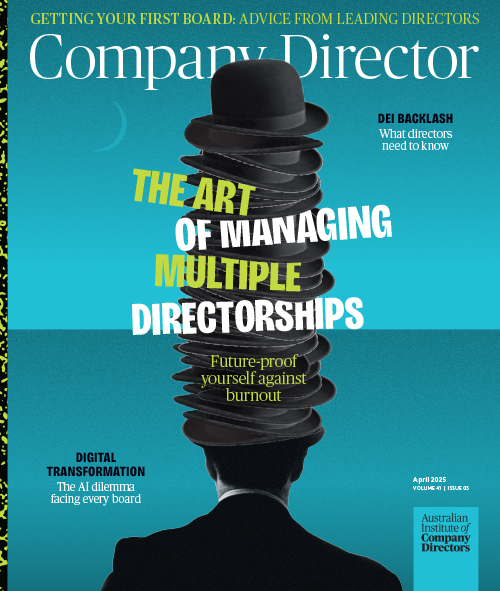The Non-Executive Chair: Providing Independent Leadership for Effective Governance
The role of the chair (also known as chairman, chairwoman or chairperson) is pivotal in guiding the board of directors and ensuring the organisation's strategic direction. While some companies opt for an executive chair who also holds a management position, others prefer the separation of powers offered by a non-executive chair. This article explores the role of the non-executive chair, their responsibilities, and the value they bring to an organisation's governance structure.
What is a non-executive chair?
A non-executive chair, also known as an independent chair, is a board member who oversees the functioning of the board without holding a concurrent management position within the organisation. They are responsible for leading the board and ensuring effective governance practices, while maintaining a clear separation from the day-to-day operations managed by the executive team.
Key responsibilities of a non-executive chair
The non-executive chair has several crucial responsibilities:
- Board leadership: The non-executive chair sets the agenda for board meetings, facilitates discussions, and ensures that all directors have the opportunity to contribute effectively.
- Governance oversight: They are responsible for maintaining high standards of corporate governance, ensuring compliance with legal and regulatory requirements, and promoting a culture of integrity and transparency.
- Strategy and performance: The non-executive chair works closely with the CEO and executive team to develop and implement the organisation's strategic objectives, monitor performance, and hold management accountable for results.
- Board composition and succession planning: They play a key role in assessing the skills and expertise required on the board, identifying potential candidates, and ensuring a smooth succession process for board members and the CEO.
- Stakeholder engagement: The non-executive chair acts as a bridge between the board and stakeholders, including shareholders, employees, customers, and the wider community, ensuring effective communication and addressing concerns.
- Mentor and advisor: They serve as a sounding board for the CEO and provide guidance and support to the executive team, while maintaining the independence necessary for objective decision-making.
By focusing on these areas, the non-executive chair helps to ensure that the board operates effectively and that the organisation is well-positioned for long-term success.
Benefits of having a non-executive chair
The presence of a non-executive chair offers several advantages:
- Independence: A non-executive chair brings an objective perspective to the board, free from the potential conflicts of interest that can arise when the chair also holds an executive position.
- Checks and balances: The separation of the chair and CEO roles provides a system of checks and balances, ensuring that no single individual has excessive power or influence over the organisation's decision-making processes.
- Enhanced governance: Non-executive chairs are typically well-versed in best practices for corporate governance and can help to ensure that the board adheres to these standards.
- Diverse perspectives: As an independent member of the board, the non-executive chair can bring fresh insights and challenge established thinking, promoting robust discussions and well-informed decision-making.
- Stakeholder confidence: The presence of a non-executive chair can enhance the confidence of stakeholders, who may perceive the board as more independent and objective in its oversight of the organisation.
Organisations that appoint a non-executive chair demonstrate a commitment to good governance and the separation of powers, which can ultimately contribute to improved performance and long-term sustainability.
Challenges and considerations
While the non-executive chair role offers numerous benefits, there are some challenges and considerations to keep in mind:
Time commitment: Non-executive chairs must be able to dedicate sufficient time to their role, attending board meetings, engaging with stakeholders, and staying informed about the organisation's activities.
Industry knowledge: Non-executive chair aught to have a deep understanding of the industry in which the organisation operates, as well as the broader business landscape, to provide effective guidance and oversight.
Relationship with the CEO: The non-executive chair must strike a balance between supporting and challenging the CEO, maintaining a constructive working relationship while also holding them accountable for performance.
Succession planning: Organisations must have robust succession plans in place for the non-executive chair role, ensuring a smooth transition and continuity of leadership.
Remuneration: The compensation structure for non-executive chairs should align with their responsibilities and the time commitment required, while also reflecting market standards and the organisation's performance.
Organisations should carefully consider these factors when appointing a non-executive chair and ensure that the individual selected has the skills, experience, and personal qualities necessary to fulfil the role effectively.
The non-executive chair plays a vital role in providing independent leadership and oversight for an organisation's board of directors. By focusing on governance, strategy, and stakeholder engagement, non-executive chairs help to ensure that the board operates effectively and that the organisation is well-positioned for long-term success. The separation of the chair and CEO roles provides a system of checks and balances, promoting accountability and transparency. By embracing this model of leadership, organisations can strengthen their governance structures and build the resilience necessary to thrive in the face of future challenges.
Already a member?
Login to view this content



